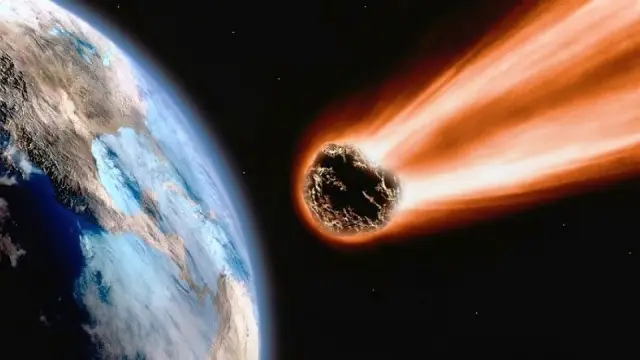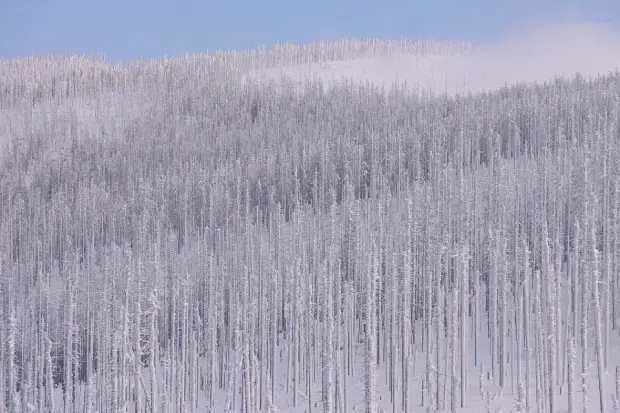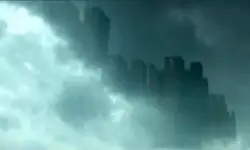Unknown global climate cataclysm of the VI century, about which science is silent
The sun has given a sign, the like of which has never been seen and which has never been reported. The sun darkened, and its darkness lasted for 18 months. Every day it shone for about four hours, and yet this light was only a faint shadow. Everyone thought that the sun would never return its full light again
Historiae Ecclesiasticae
Between 535 and 536, a series of major global climate events occurred, which can easily be described as a global cataclysm with catastrophic consequences. The above excerpt is taken from the writings of the historian and authoritative spiritual leader of the sixth century John of Ephesus in his historical work "Church Histories" ("Historiae Ecclesiasticae").

John of Ephesus is not the only one who mentions this event. Procopius lived between 500 and 565 AD, he was a scholar of late antiquity and one of the main historians of the 6th century. He also mentions the strange behavior of the sun and believes that this is a bad sign and the beginning of bad events.
... during this year, the most terrible event happened. For the sun emitted its light without brightness... and it seemed very much like the sun in an eclipse, for the rays it shed were unclear.
History of Wars: The Vandal War.
And we have another mention from a sixth-century writer, Zacharias of Mytilene, who is the author of a chronicle containing a section mentioning the "dark sun" in the period 535/536 AD.
The sun began to darken during the day, and the moon at night, and the ocean raged from the waves from March 24 this year to June 24 next year... And since the winter was harsh, so much so that birds died from a large and unprecedented amount of snow... it was a disaster... among people... from evil deeds
Zachariah of Mytilene (Chronicle, 9.19, 10.1)
These three passages are just illustrative examples of numerous stories from around the world written in the same time period. In all cases, the sun was described as dimming and losing its light. Many also described that it acquires a bluish color.
A similar effect was observed with the moon - it was no longer so bright. The decrease in light led to a decrease in heat on the planet; the lack of rains and a very long winter led to crop failure, the death of birds and other wild animals, as Zachariah of Mytilensky writes. Famine and plague struck many areas, and there were a huge number of deaths.

In China and Japan, this event was also recorded in great detail. Massive droughts and thousands of deaths. There was not enough water for people and land. Hundreds of thousands of square kilometers of land have become barren. In the Beishi Chronicles, the official history of the Northern Dynasties, it is mentioned that in 536, 80% of the population died in Xi'an Province, and the survivors ate corpses to survive.
The catastrophic event hit Korea, America, Europe, Africa, and Australia. Although written evidence does not exist for all countries, archaeological and geological data have revealed evidence of climate change. For example, studies conducted on tree trunks have shown that the year 536 AD was the coldest in the last 1,500 years.
The important question in all of this is why did this happen? Although there are no definite answers, one of the theories put forward is that there was an impact of a large asteroid or comet that fell into the sea (if it had fallen on the land, then a crater would have remained).
Geologist Dallas Abbott is one of the proponents of this point of view and bases his point of view on the evidence he discovered while studying ice cores from Greenland. However, this does not explain the dim light of the sun, and during this period there were no tsunamis that could have occurred if the asteroid had fallen into the ocean.
Another theory put forward is a giant volcanic eruption - dust released into the atmosphere could cause dim light. One of the candidates is the Krakatoa volcano, located between the islands of Java and Sumatra in Indonesia. Indeed, the "Book of Ancient Kings" or "Pustaka Raja Purva", written in 1869, describes an ancient volcano.
There was a violent shaking of the earth, complete darkness, thunder and light... Then a violent wind rose with torrential rain, and a deadly storm overshadowed the whole world. When the waters subsided, it became clear that the island of Java split into two parts, resulting in the formation of the island of Sumatra
The quote
However, this manuscript dates back to 416 AD, not 535 AD. However, the fact that it was written in the 19th century may explain inaccuracies in the indication of time. Whether the answer will ever be found is unknown. It is unknown whether scientists continue to investigate this event at all. One feature of this global cataclysm is that it is a very little-known event.
Why is this climate event not being studied in schools? Why aren't there many studies devoted to this event?
Perhaps because it reminds us of our fragility as human beings and that no matter how powerful and "advanced" humanity may become, we still remain at the mercy of nature.
About author:
Serg Toporkov Ufologist, Ph.D., blogger, I go on my own expeditions for UFOs. I use scientific methods to investigate the UAP phenomenon. Write to me |
Related tags:
global climate cataclysm VI century science changes conspiracyRandom UFO or conspiracy article
Do not confuse the mirage with UFOs and flying ships
 On the Internet, you can find a large number of false reports about UFOs. Often people confuse simple optical phenomena with something amazing. In this article, we will deal with this issue
On the Internet, you can find a large number of false reports about UFOs. Often people confuse simple optical phenomena with something amazing. In this article, we will deal with this issue
